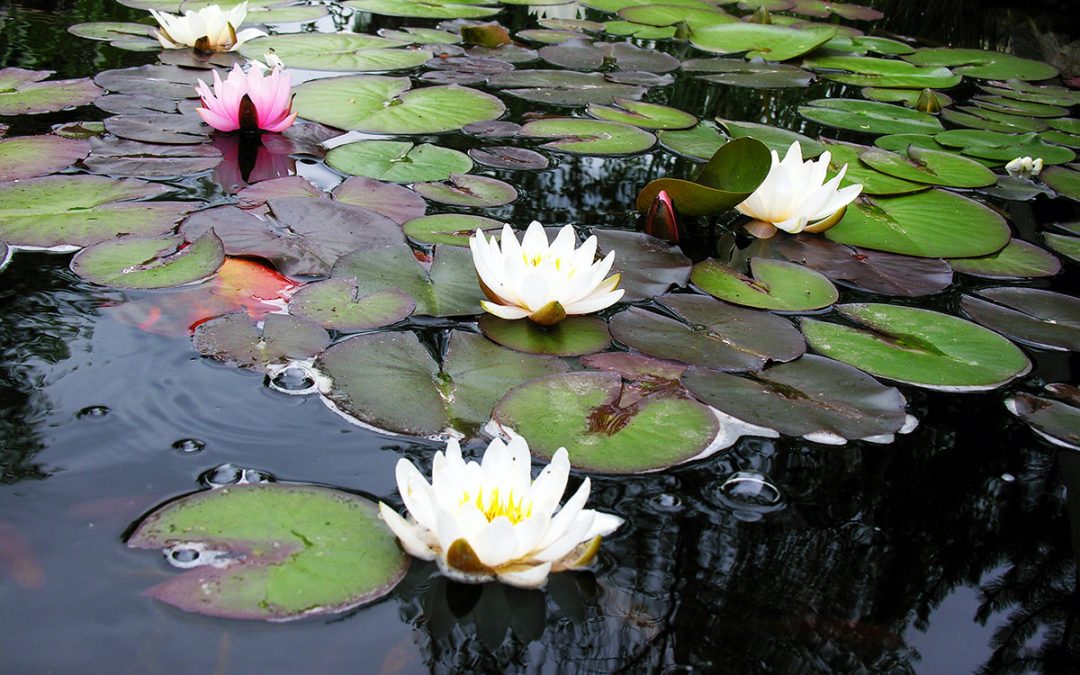UPDATED February 26, 2019
Koi fish are majestically beautiful fish that thrive well in the Calgary climate. Are you thinking about adding an outdoor water feature to your backyard this spring? If you are, koi fish can be the finishing touch to make your pond truly enchanting. With the assistance of these tips, (and our winterization professionals) koi fish can survive over the chilly Calgary winters.
Outdoor water features add charm and come in many different shapes and sizes that all serve to bring your yard a sense of enchantment. Winterizing your pond is a straightforward process that is normally completed in the early fall to spring season. Preparing your koi fish for the cooler season involves 6 steps: cleaning up organic material, performing a water change, cleaning out filters, removing aquatic plants, halting the feeding of your fish, and the process of leaving an opening in the pond.
Koi fish are majestically beautiful fish that thrive well in the Calgary climate. Are you thinking about adding an outdoor water feature to your backyard this spring? If you are, koi fish can be the finishing touch to make your pond truly enchanting. With the assistance of these tips, (and our winterization professionals) koi fish can survive over the chilly Calgary winters.
Outdoor water features add charm and come in many different shapes and sizes that all serve to bring your yard a sense of enchantment. Winterizing your pond is a straightforward process that is normally completed in the early fall to spring season. Preparing your koi fish for the cooler season involves 6 steps: cleaning up organic material, performing a water change, cleaning out filters, removing aquatic plants, halting the feeding of your fish, and the process of leaving an opening in the pond.
1. Clean Up Organic Material
Even though a small amount of organic material can help provide warmth to your koi fish, it’s important to clear your pond of leaves, grass, branches or any other organic/plant material that may have made its way inside the pond. This process will help to prevent decay over winter.
2. Perform A Water Change
A slight water change (under 40%) will aid in your efforts to get rid of the excess organic material that was left behind. The water change is critical because it provides your koi fish with a clean and fresh living space.
3. Clean Out External Filters
Rinse the filters and store them in a cool, dry place. Cleansing the external filters at the end of each season provides your koi fish with a freshly sanitized space that they’ll use again in the spring.
4. Remove Tropical Aquatic Plants
Not all tropical plants will survive the winter and if left in the pond they can create pollution in the water. Keep your koi fish healthy and magnificent by transferring the tropical plants indoors over the winter season.
5. Stop Feeding Your Fish When Water Reaches 45F/7C.
At this water temperature, koi fish will happily hibernate near the bottom of your pond. Koi fish will occasionally come to the surface during winter; they are not coming up for food but simply oxygen.
6. Leave An Opening In The Ice
Leave a small opening in the ice so that your koi fish may have an area to breathe in the oxygen. This can be achieved by incorporating a pond heater, aeration stone or submergible pump. All are viable options that can be chosen based on the current features of your backyard, as different adjustments will need to be made according to the outdoor water feature.
Bring your
outdoor oasis



